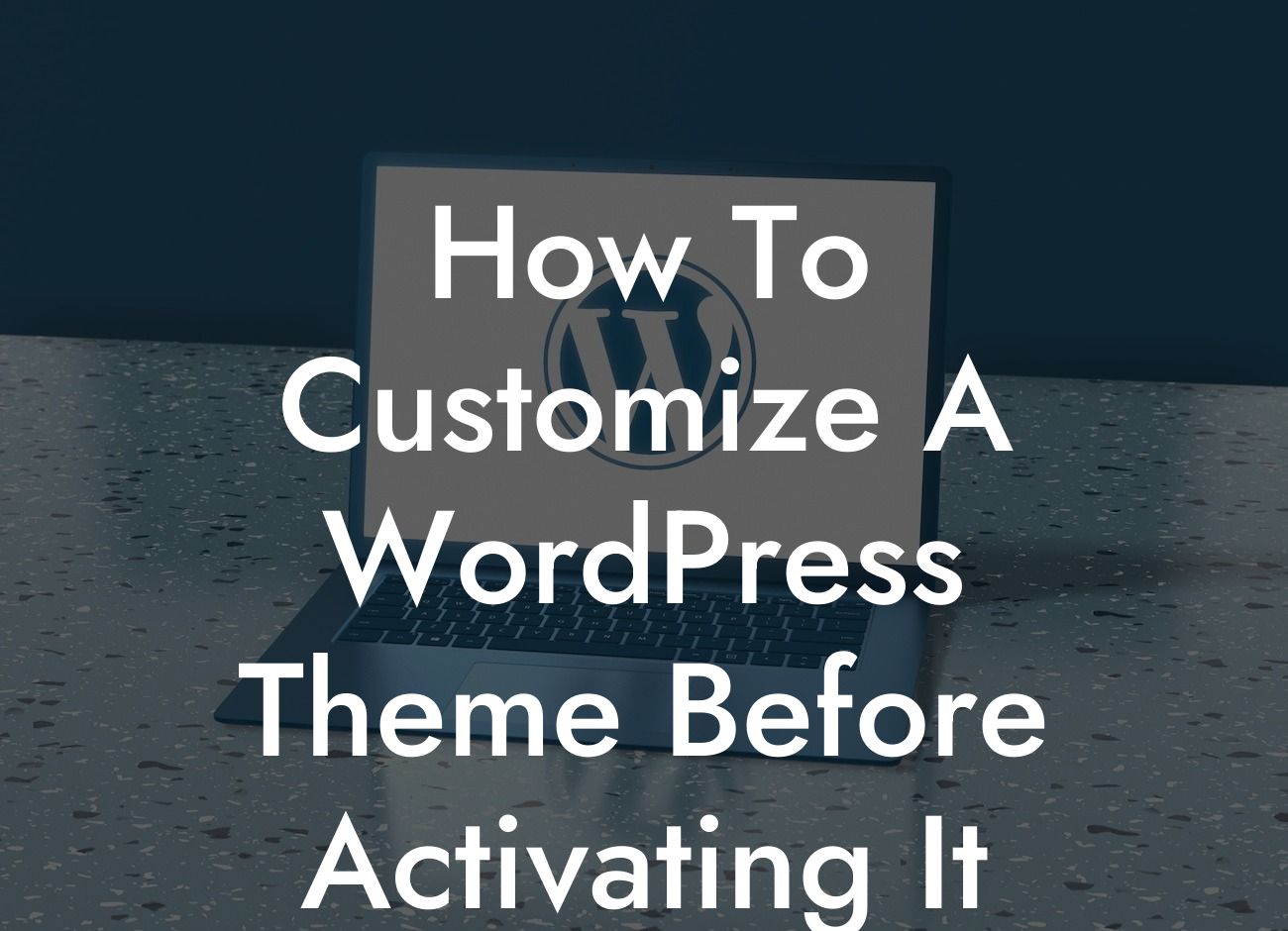Customizing your WordPress theme can give your website a unique and professional look that resonates with your brand. But, before diving into the process, it's important to understand the vital steps to ensure a smooth transition. In this guide, we'll walk you through the detailed process of customizing a WordPress theme before activating it, ensuring your online presence reflects your true identity.
When it comes to customizing a WordPress theme, you want to make sure your changes align with your brand, enhance user experience, and boost conversions. Follow these steps to transform your theme into a tailored masterpiece:
1. Research and Analysis:
Before making any changes, conduct thorough research to understand your target audience's preferences, color schemes, and design trends. Analyze competitor websites and take inspiration from successful brands in your industry.
2. Creating a Child Theme:
Looking For a Custom QuickBook Integration?
It's crucial to create a child theme to preserve your changes when the parent theme updates. This way, you can enjoy the latest features without losing customizations. We recommend using plugins like Child Theme Configurator or manually creating a child theme using FTP.
3. Customizing the Header:
The header is the first thing visitors notice when they land on your website. Personalize it by adding your logo, adjusting the menu style, and incorporating captivating typography. Ensure it aligns with your brand's tone and style.
4. Fine-tuning the Layout:
Customize the layout to match your content requirements. Use suitable header tags (H1, H2, H3) to structure your content. Optimize the spacing, fonts, and colors to enhance readability. Consider the placement of sidebars, widgets, and footers to create a cohesive look.
5. Styling the Fonts and Colors:
Choose fonts that align with your brand identity and make sure they are easy to read across different devices. Harmonize your color scheme with your logo and choose contrasting colors for text and background. Maintain consistency throughout your website.
6. Adding Custom Widgets:
Take advantage of custom widgets to improve user engagement. Popular examples include social media integration, popular posts, contact forms, and testimonials. Evaluate your business needs and choose widgets accordingly.
7. Optimizing for Mobile Devices:
With mobile traffic on the rise, it's vital to ensure your website looks great and functions flawlessly on smartphones and tablets. Test your theme on different devices and use plugins, like WPtouch, to optimize the mobile user experience.
How To Customize A Wordpress Theme Before Activating It Example:
Let's say you run a small bakery business and want to create a website that showcases your delicious treats. After careful research and analysis, you decide on a warm color palette, elegant fonts, and a simplistic layout. You customize the header to display your bakery logo, adjust the layout to highlight your best-selling products, and add a custom widget allowing customers to order online directly from your website. The end result is a vibrant and user-friendly website that perfectly represents your brand.
Now that you understand the process of customizing a WordPress theme before activating it, it's time to unlock the extraordinary for your online presence. Explore other guides and resources available at DamnWoo to further enhance your website's performance. Don't forget to try our awesome WordPress plugins designed exclusively for small businesses and entrepreneurs. Share this article with others who might find it useful and let's create exceptional websites together.













